Discover the top 8 sustainable food storage options for meal prep in 2024. Do your part in reducing waste, saving money, and keeping food fresh with these eco-friendly options!
Why Choose Sustainable Food Storage?
Did you know that the average American family wastes about 30% of the food they buy? Ouch…
Thankfully, with the following food storage solutions, you cut down on the amount of waste you produce AND save money! Keep reading to find out which are the best eco-friendly food storage options for family meal prep.
The Benefits of Sustainable Food Storage Alternatives
I’m sure you are aware that plastic is not great for the environment, but sometimes that is just not enough to convince us to change old habits. But seeing the benefits of using sustainable food storage options just might! By switching to more sustainable options, you are not only helping reduce pollution and protecting marine life. You are also saving money in the long run, keeping food fresher for longer periods of time, and protecting you and your family from potentially harmful chemicals such as BPA.
- Save Money – You may spend a few extra dollars investing in sustainable food storage containers up front, but these products will likely last you years. So, instead of having to purchase plastic products multiple times, you can re-use your sustainable products and save money over time.
- Keep Food Fresh for Longer – Glass containers and beeswax wraps keep your food fresh for longer periods of time than plastic. An added bonus is your food doesn’t absorb the taste of the plastic either! This means less food wasted and more money saved again!
- Health Benefits – Many plastic products contain harmful chemicals which then expose your food to the same harmful chemicals. On the other hand, many sustainable products are made from non-toxic materials, meaning your food (and therefore YOU) are not absorbing those harmful chemicals either. Chemicals don’t seep out of glass and food grade silicone even when hot so you can feel good about using them for many reasons!
Top 8 Sustainable Food Storage Solutions
This post contains affiliate links. If you purchase through these links, I may earn a commission at no additional cost to you. Your support helps keep this blog running. All opinions expressed are my own.
Glass containers with bamboo lids
Choose a durable glass container that is BPA free! Many options come with plastic lids, so opt for bamboo lids for a more eco-friendly option. An added bonus is that you can use the bamboo lids as cutting boards so they are multipurpose! My family recommends these glass containers with bamboo lids as they are durable, leak proof, and BPA free! They are also freezer, dishwasher and microwave safe.
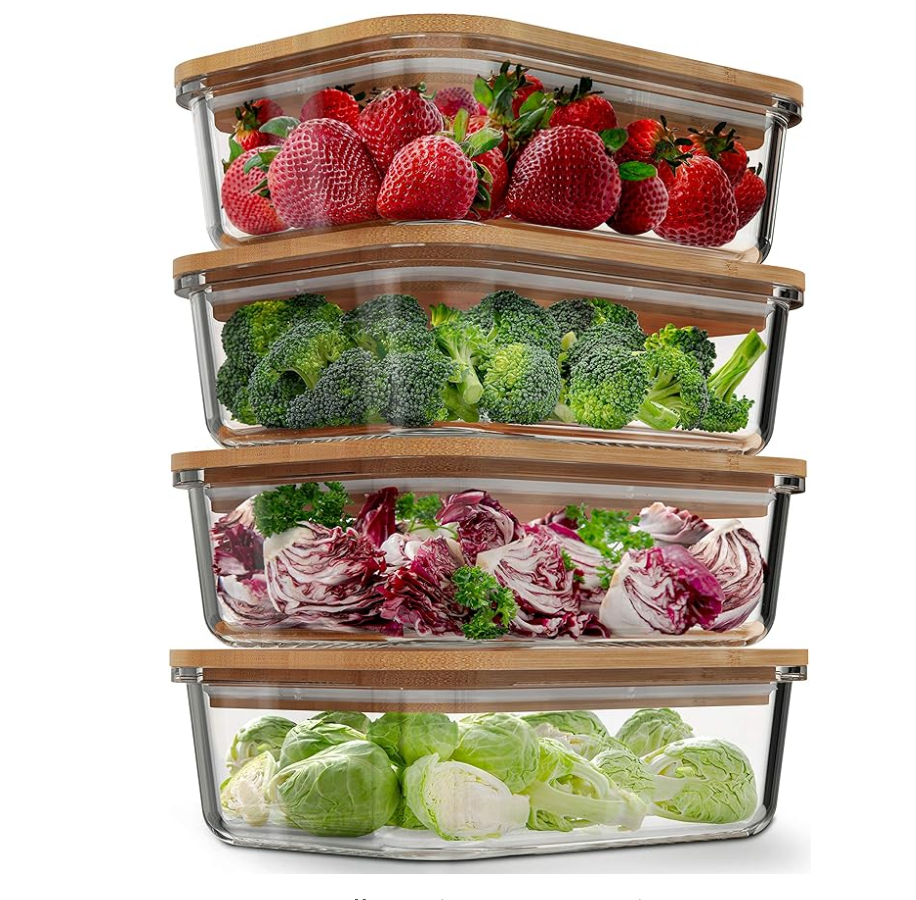
Silicone food storage bags
These bags are freezer and dishwasher safe! Silicone bags are great for packing sandwiches or snacks and storing fruits and vegetables. You can purchase a 4 pack for about $40. Although these are more expensive up front, they will last for years if properly cared for.
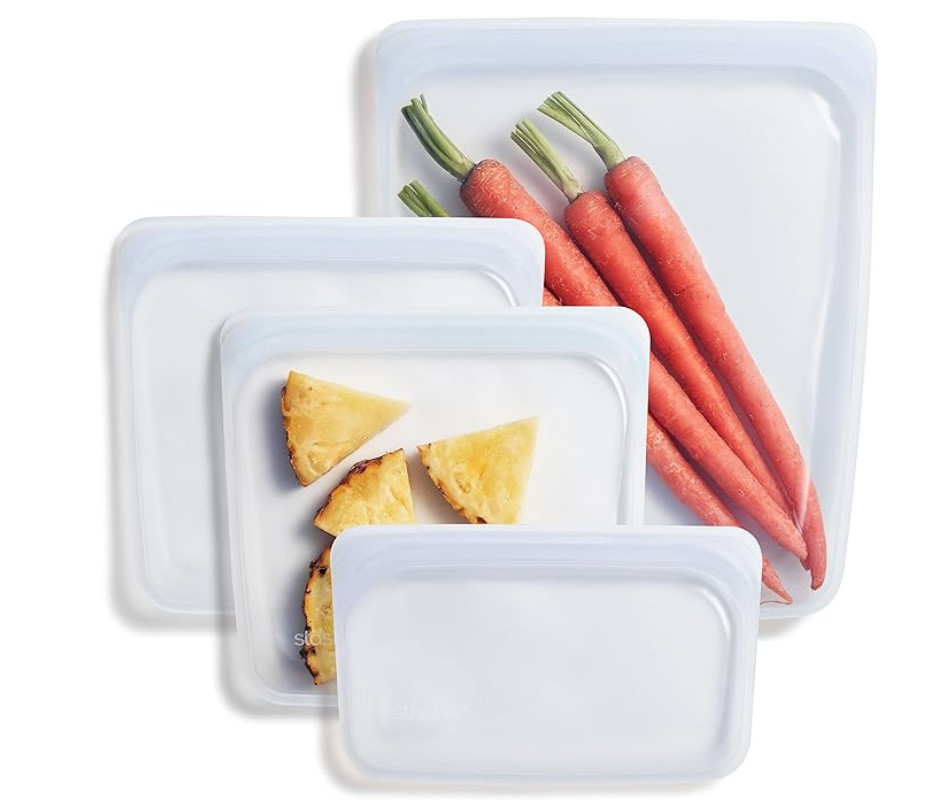
Beeswax wraps
This only costs about $25 and can be re-used for about a year. This alternative to plastic wraps is perfect for wrapping bread, sandwiches, cheese, avocados, covering bowls, etc! This isn’t something you probably just have lying around your house, but it is worth the $25/year, especially since it is not much more than you would spend yearly on plastic wrap, aluminum foil, etc. You can purchase a “cut to size” roll.

Mason jars
These are so cheap, come in a variety of sizes, are extremely versatile, and of course, recyclable! You probably even have some around your house now. And if not Mason Jars, you can definitely use old pickle or jelly jars too! Mason Jars are perfect for storing soups, sauces, grains, nuts, beans, etc. You can even use them to drink out of (a very typical southern thing)! If you don’t have some lying around your home, you can purchase a 12 pack for just about $10.
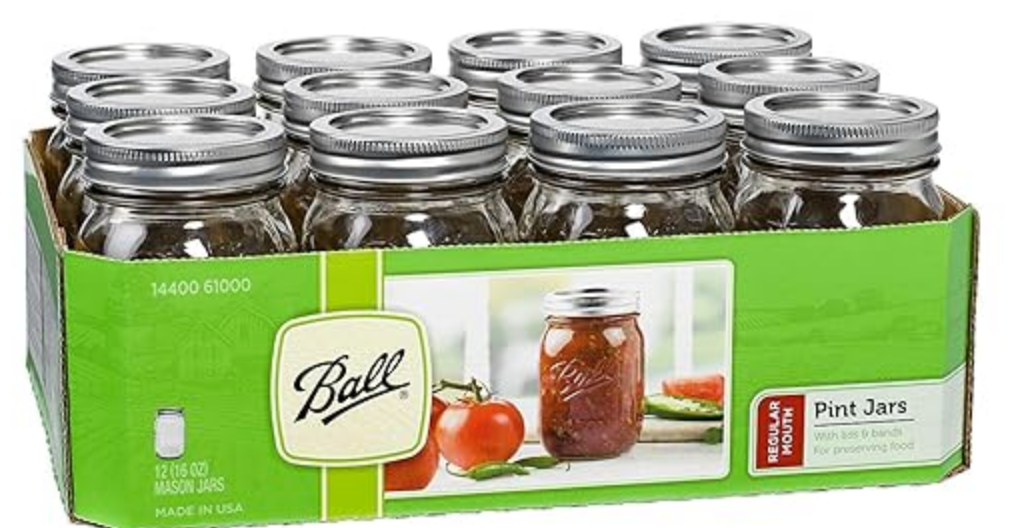
Fabric produce bags
Fabric produce bags are a great way to reduce plastic because let’s be honest.. it is really hard to re-use those oddly shaped, long bags that the stores give you. Instead, take these organic cotton muslin bags that come in a variety of sizes. Not only are they great for produce, but you can also use them for grains and nuts when buying in bulk! This option comes with 2 large bags, 2 medium bags and 2 small bags. They are washable too, so no worries if something gets spilled on them!
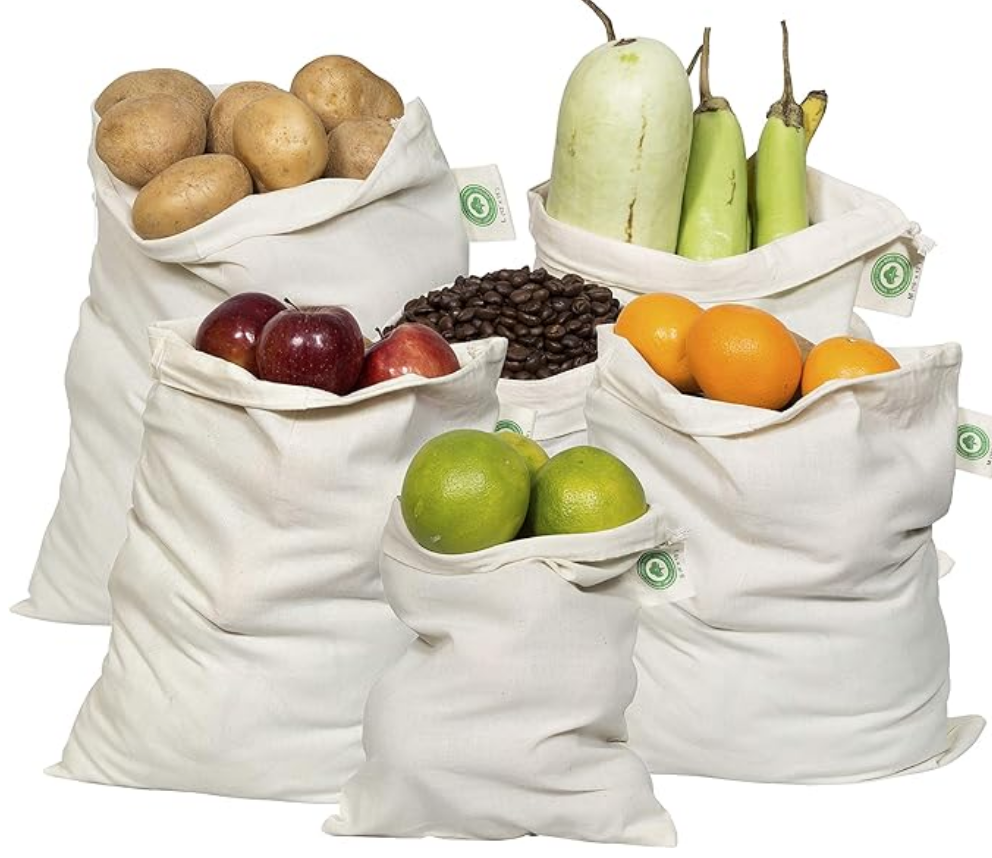
Stainless steel bento boxes
These boxes are perfect for lunch or snacks on the go! There are options that are suitable for kids and adults as well! I recommend this option for kids since the food can easily be separated and portioned out! It is made with stainless steel and silicone that are BPA free, non-toxic and dishwasher/freezer safe!
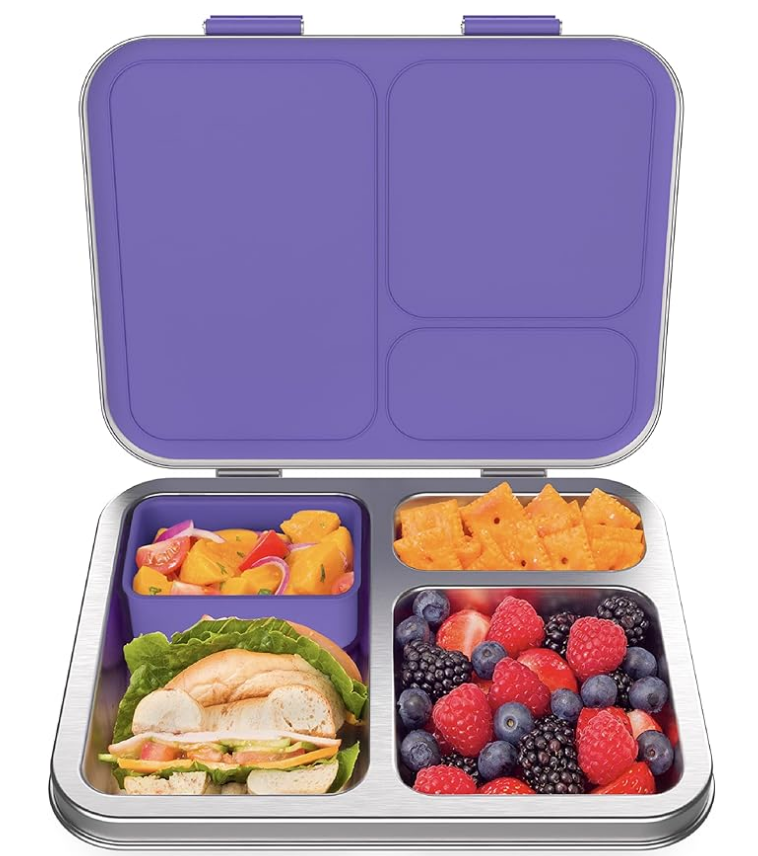
For adults or teens, I recommend this BPA free option. It is dishwasher, microwave and freezer safe! It also has a leak resistant silicone seal so it is great for a variety of foods.
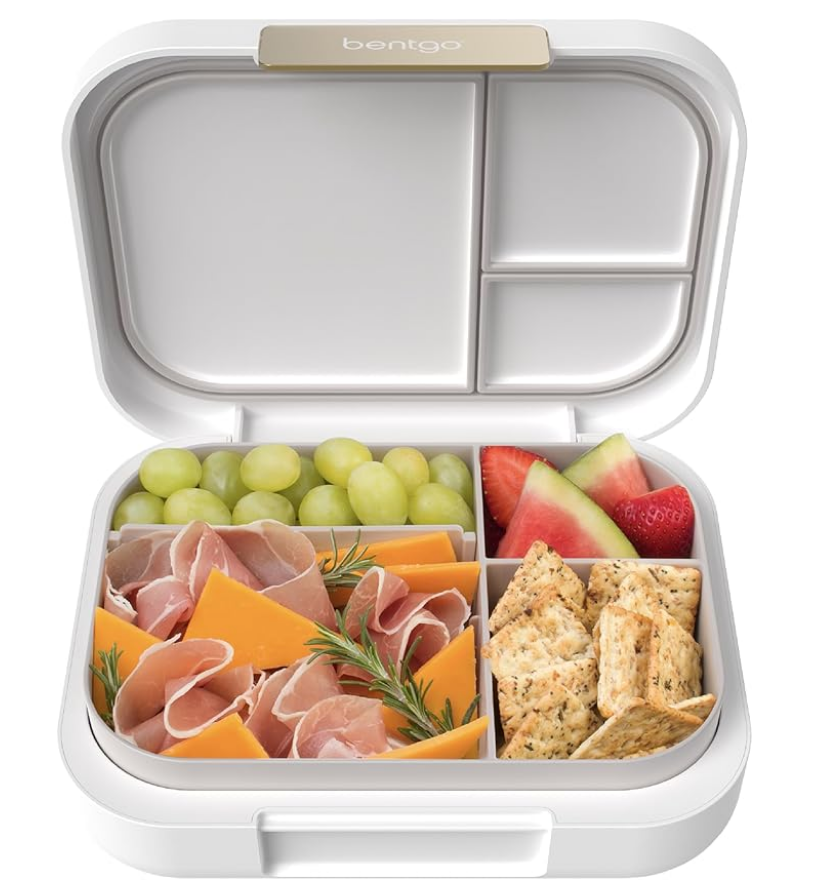
Biodegradable plant-based containers
Although these containers are not re-usable, they are plant based and compostable. These are a good option if you want to be able to dispose of your container after a meal rather than having to wash it out (this could come in handy when traveling where you might not have access to washing out containers). They are leak proof, BPA free, and even freezer, microwave and oven safe so you can heat up your food right in the container. Since they are not re-usable, you would be spending more money over time. But you can buy these in bulk and grab a 50 pack of containers and lids for about $35.

Compostable food storage bags
This option is cheaper up front, but does not last as long. However, it is a good option if you don’t want to rewash your bags. These bags are commercial compostable where facilities exist, so check locally before purchasing! You can purchase a pack of 25 for about $14.

Best Practices for Eco-Friendly Meal Prep
Plan out your family’s meals to reduce waste.
- When we are on the run and trying to throw a meal together really quickly, it is easy to overlook leftovers in the fridge or pantry that could easily be incorporated into another meal. Start by taking one day a week, or even once every two weeks, to sit down and plan out your meals. This includes planning the days you may eat or at least incorporate leftovers into another meal. Meal planning does not have to take a long time. Additionally, once you have done it a few times. you can start repeating recipes and meal ideas so this will be super quick!
- If you want more specific tips on meal planning for toddlers and your busy family, check out this blog post for a run down of 10 tips for meal prepping as busy parents!
Use proper portioning techniques.
- Portioning is about balance and helping to reduce the amount of food we throw out- it’s not about dieting! Keep it simple. Sure, you can use measuring utensils to perfectly portion out a meal, but that really isn’t necessary. Instead, just use the plate method by filling about half of your plate with vegetables, a quarter with lean protein, and a quarter with whole grains or starchy vegetables.
- Don’t forget to pre-portion snacks as well to make them even easier to grab on the go.
- When batch cooking, go ahead and separate your food into portioned containers.
Label and organize your sustainable food storage system.
- Keeping your kitchen organized will help you know what food needs to be eaten and when. This will help keep food from going bad simply because you forgot about it. So, label your food when you bring it home from the store.
How to Transition to Sustainable Food Storage
Assess your current storage options
- Now is the time to take a look at which containers you have that you might need to get rid of in order to make space for the new containers. Ask yourself, “Are there any containers that I already own that are eco-friendly and helpful for family meal prep?” If so, decide which containers you plan to keep and which ones you plan to get rid of (or repurpose).
Gradually replace your plastic containers
- So here we are talking about reducing waste, but I am telling you to throw out your plastic containers? That does not sound very eco-friendly! I like to repurpose old plastic containers if possible to help reduce the waste. If you have a place near you that will recycle them, great! If not, think of ways you can re-use these plastic containers such as for art projects, organizing your office supplies, portable first aid kids, or even garden seed starters! The possibilities are endless, so don’t feel bad about getting them out of the kitchen.
Budget-friendly options
If you are like me, you will want to find the cheapest option that still fits the bill. I get it! Thats why I started out using the following as the first additions to my eco-friendly food storage collection.
- Mason Jars (or old jelly or pickle jars work just as well)- If you don’t have some lying around your home, you can purchase a 12 pack for just about $10 here.
- Reusable Beeswax Food Wrap – You can purchase a “cut to size” roll for about $25 here.
- Silicone Food Storage Bags – You can purchase a 4 pack for about $40 here. Although these are more expensive up front, they will last for years if properly cared for.
Cleaning and Maintaining Sustainable Food Storage
For most glass, silicone and stainless steel sustainable food storage containers, you can keep them clean using equal parts warm water and white vinegar. If there are tough stains, you can use baking soda, water and mild dish soap for a deeper clean. Soaking the containers in these cleaning solutions will help release odors and keep them cleaner. HOWEVER, when washing the bamboo lids, DO NOT SOAK. Just wipe off with a cloth dampened with soap and water. You should replace bamboo products if you notice mold or splintering. Replace glass containers if you notice cracks or chips and replace silicone if you notice tears or odors that won’t go away after thorough cleaning.
For the beeswax wraps, wash with water and a mild dish soap. Make sure you let them dry completely before re-using them or storing. These should last you about a year, but replace when they no longer cling to your containers or food.
Are you ready to organize your meal prepping strategies all while choosing sustainable and affordable food storage options? With these eco-friendly food storage solutions, you will be on your way to creating a more sustainable kitchen. Every small change adds up! Start by swapping out one type of container at a time and finding fun ways to re-utilize the plastic you do have. Your wallet, your health, and the planet will all thank you!
[…] Also, consider the glass containers for easy reheating and visibility (My family uses these and we love them! They are super durable – I just toss them in the diaper bag and don’t have to worry about them busting or leaking). They are dishwasher safe or easily hand washed. For 8 affordable and sustainable food prep options, take a look at this blog post! […]
[…] Visit Post […]
[…] you are looking for sustainable lunch boxes, food prep items, or food storage containers, check out this post for a detailed run down of some favorite […]
[…] out this blog post for more detailed information on sustainable products, recommended brands, and further benefits of […]